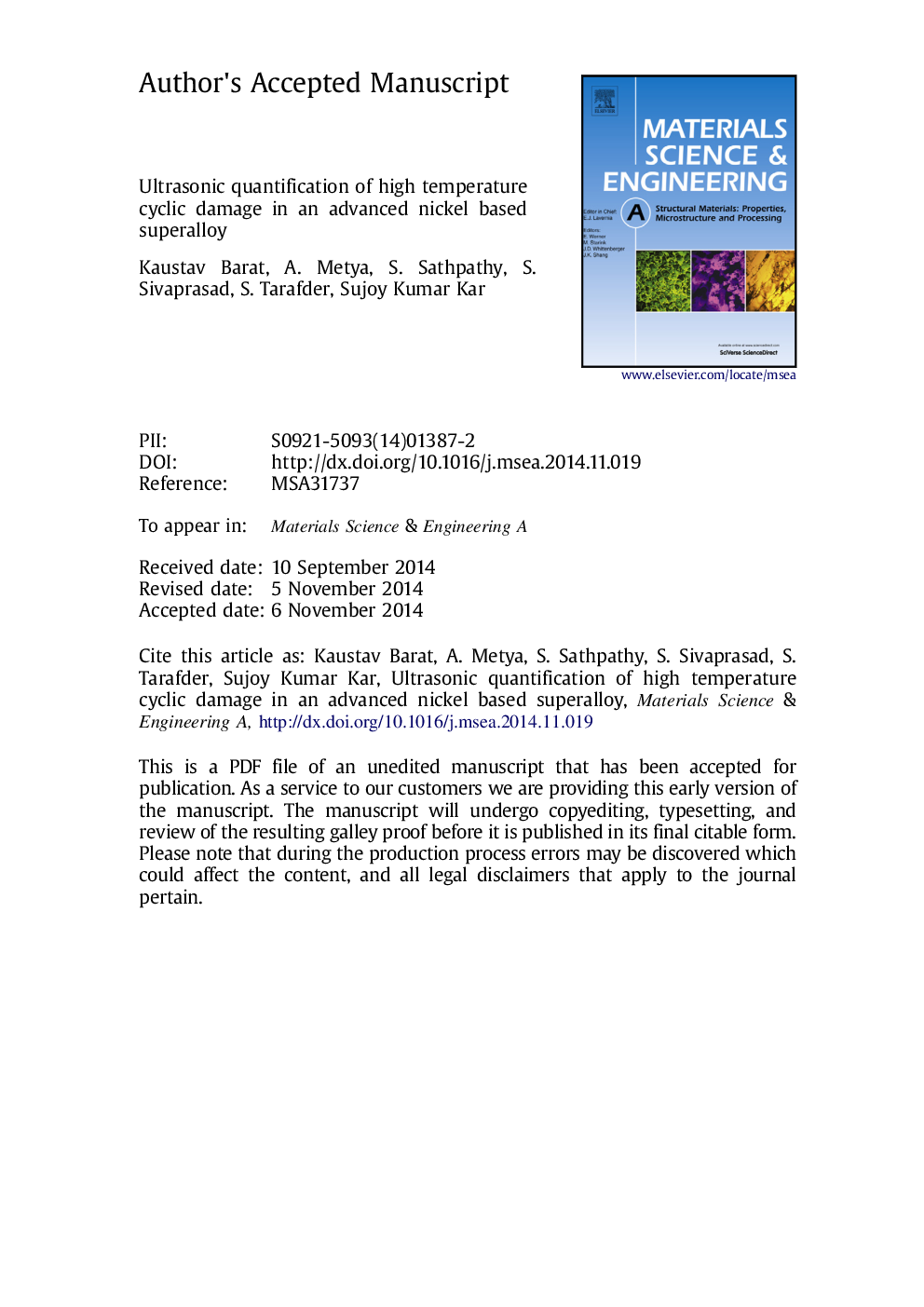| Article ID | Journal | Published Year | Pages | File Type |
|---|---|---|---|---|
| 7979112 | Materials Science and Engineering: A | 2015 | 34 Pages |
Abstract
Present paper discusses about a new methodology to quantify cyclic damage through ultrasonic measurement. Based on experimental results, correlations have been made between damage accumulated inside the material due to strain excursions and corresponding ultrasonic parameters. It has been proposed that based on the existing correlation between attenuation coefficient and number of cycles to failure, fatigue failure characteristics can be partitioned into two regimes (a) failures due to early nucleation and rapid propagation of cracks and (b) failures due to delayed propagation and crack coalescence. Plastic strain accumulation and surface crack density have been chosen as two physical parameters directly influencing attenuation coefficient and it has been observed that with increasing plastic strain accumulation, ultrasonic attenuation increases. Between two primary echoes of ultrasonic spectra, some secondary defect echoes have been found. A damage descriptor has been introduced by taking difference between the bandwidth of defect echo and backwall echo normalized by overall amplitude frequency distributions of backwall echo. It has been found to bear sensitivity towards surface crack density. This quantitative estimation differentiates between the classical descriptions of damage due to dislocation mediated plasticity, micro crack generation and coalescence.
Keywords
Related Topics
Physical Sciences and Engineering
Materials Science
Materials Science (General)
Authors
Kaustav Barat, A. Metya, S. Sathpathy, S. Sivaprasad, S. Tarafder, Sujoy Kumar Kar,
